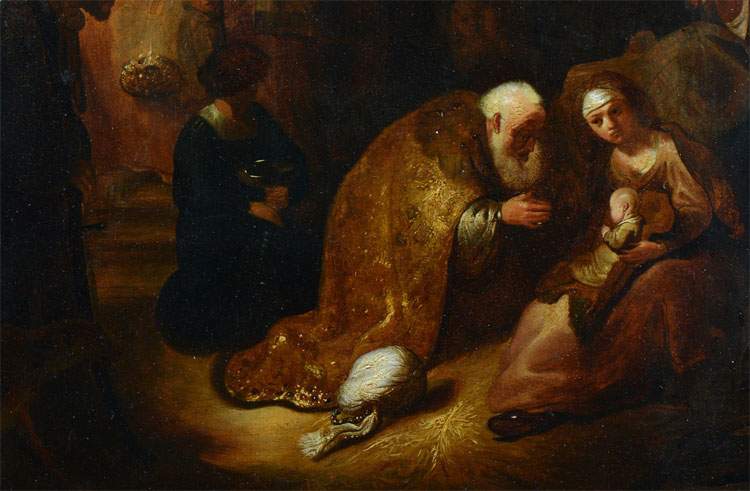Rome, 17th-century work resurfaces: it was attributed to Rembrandt
The
The work at the center of the symposium, in the course of which the attribution to Rembrandt was formulated, is an oil painting on paper applied to canvas, executed in 1632-1633, showing anAdoration of the Magi whose prototype, until now, has been considered lost by Rembrandt scholars and has survived only through copies, the best-known of which are kept in St. Petersburg and Gothenburg. The origins of the rediscovery are coincidental and date back to 2016, when an accidental trauma to which the painting was subjected made it necessary to reintel it; only then, thanks to the experience and sensitivity of restorer Antonella Di Francesco, intent on recovering and cleaning the work blackened by the ancient varnish, did the masterpiece come to light, kick-starting the studies.
 |
| The Adoration of the Magi attributed to Rembrandt. |
According to experts, the rare but typical technique of execution used by the Dutch master in the 1730s, with which the work was made, and its size (54x44.5 cm, the same as a series of Rembrandt’s engravings relating to the Life and Passion of Christ), are some of the elements that strongly support its attribution. The traces of the drawing, almost invisible in the painting to the naked eye but brought to light by IR technologies, allow, according to scholars, to participate in the ideational moment of the work the moment it took shape in the hands.
This morning’s conference, opened by greetings from Sam Stourdzéir, director of the Academy of France in Rome - Villa Medici, and Guido Talarico, president of the Heritage Italy Foundation, featured a panel of experts: Marco Mascolo, art historian, author of the book Rembrandt an Artist in Seventeenth-Century Europe; Peter Matthaes, Director of the Museum of Art and Science, Milan; Francesca Bottacin, art historian, lecturer in Flemish and Dutch Art History at the University of Urbino “Carlo Bo”; Stefano Ridolfi, Physicist for Cultural Heritage and Lecturer at La Sapienza, University of Rome; and Alessandro Caucci Molara, President of the Abraham Teerlink Foundation, Rome and Chairman of the Advisory board of Fondazione Patrimonio Italia.
“Kicking off the ’Discovering Masterpiece’ project with the discovery of an absolute masterpiece by one of the most beloved artists of all time,” said FPI President Guido Talarico, “is a source of great pride for our Foundation, which was established with the aim of enhancing Italian private collections by proposing a new approach to collecting. The intent is to share with the general public works that are sometimes unpublished, as in this case, leaving them in Italy with the aim of making our country aware of the immense potential of one of its leading assets, such as its artistic-cultural heritage, as a driver of economic growth.”
“In the course of my work,” says restorer Antonella di Francesco, “one of the most beautiful things in life can happen: the sudden awareness of being in front of a work by a very great author who reveals himself to you, who comes out of his opaque zone and chooses you to be redeemed from obscurity. This is the moment when you have to overcome the vertigo capable of plunging us into that wonderful sense of belonging to history. It is a thrill that is unparalleled, that vibrates until it draws you into an irrepressible impulse of morbid curiosity. I don’t fight it and let myself be carried inside the spell.”
 |
| Rome, 17th-century work resurfaces: it was attributed to Rembrandt |
Warning: the translation into English of the original Italian article was created using automatic tools. We undertake to review all articles, but we do not guarantee the total absence of inaccuracies in the translation due to the program. You can find the original by clicking on the ITA button. If you find any mistake,please contact us.




























